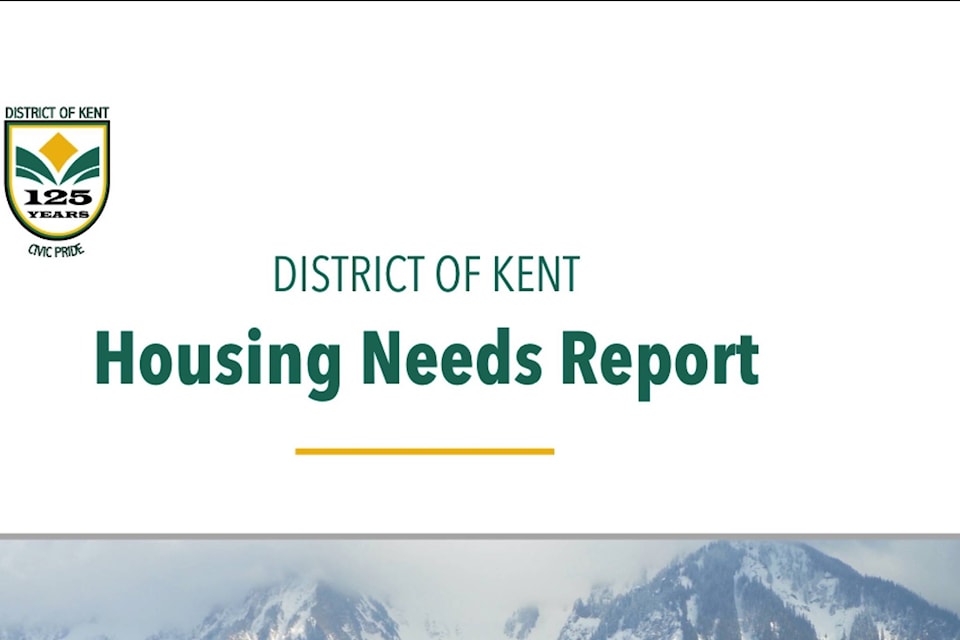A growing and older population throughout the province continues to put pressure on the housing market. In response, the District of Kent looked to housing specialists Urban Matters to look for solutions as the district continues to develop.
The following is a breakdown of the 68-page District of Kent Housing Needs Report.
Age and Population
The District of Kent has experienced a steady, exponential increase in population over the course of the past three censuses from four per cent between 2006 to 2011 and 8 per cent between 2011 and 2016. The most recent population data for the district estimates a 2019 population of 6,704 people, a growth of 16 per cent, which was on par with growth throughout the Fraser Valley.
Projections from Urban Matters based on Statistic Canada and B.C. Stats information suggests that if the growth continues with the same momentum, the population could grow to 7,123 people by 2025, marking an increase of 419 people in about six years.
RELATED: Short term rentals now allowed in Agassiz
The average age for the district is projected to continue its upward trend as well, which is consistent with the national trends. Kent has an older population than other communities throughout the Fraser Valley Regional District (FVRD), rising from 44.3 years to 49.3 years. The median FVRD age was about 40.6 in 2016. The District of Kent has more adults ages 55 and older than other populations in the region. While the estimated median age by 2025 is projected to rise a little higher to 50.6 years old, there is moderate growth projected for younger groups from ages 0 to 14 and 25 to 44.
Households
Most of the 2,190 households in the district are most are two-person households, which coincides with the older median age as it’s likely most children have left the home. However, projections indicate the household size could increase in the future with an increase of young adults starting families.
Nearly three quarters of housing units in the District of Kent are single-detached homes, followed by row housing at 12 per cent. The demand for single-detached housing remains steadily high in the district as there have been no multi-family building permits in 2018 or 2019.
Most housing units in the district have three or more bedrooms, yet 70 per cent of all households had one or two people in it, meaning several housheholds have more bedrooms than they need, which matches up with the older population and children leaving home. Larger homes can present a maintenance problem for older adults, particularly those over the age of 85.
Affordability
Typical to trends elsewhere in the FVRD and the province, affordability remains a top issue in the District of Kent.
Most Kent homes are owned with prices rising over the course of the past 10 years and nearly doubling in the past five. During that time, between 2015 and 2016, the district attracted a larger than average number of movers who came from elsewhere in B.C. In 2016, 13 per cent of district residents moved to the community in the year before, which is almost twice as high as the average for the FVRD and B.C.
RELATED: Kent to undertake housing needs assessment
Due to the consistent rise in sales prices, single-income households are likely priced out of ownership, despite a median income increase of about 20 per cent between 2006 and 2016. About 22 per cent of district households are rentals with the number rising nearly twice as fast as owner households from 2006 to 2016. Rentals, too, may be out of the range of most single-income households based on secondary market rental listings.
If the District of Kent grows as projected, the community will see an additional 508 households form from 2016 to 2025.
There are nine people counted as experiencing homelessness in the Agassiz-Harrison area and there are no emergency shelter beds in the community.
Projections
Projections in this report factor in a number of data sets, including B.C. Stats population projections, migration patterns, fertility and mortality. Households are expected to grow by an additional 281 households in the next five years. Rental housing units are expected to grow by another 38 households by 2025; during the same period and assuming demand for owner properties continues to rise, another 281 households will be on the market for owners.
Households with couples without children are expected to continue to grow, which parallels with an older population. Based on that, the demand for smaller units is expected to be top priority in the next five years. Over this upcoming period, it’s expected that 80 per cent of households will require studio, one- or two-bedroom units to meet their needs.
Community Engagement
Community engagement saw input from several local entities, including local developers, the FVRD, real estate agents, Agassiz-Harrison Community Services and the Harrison-Agassiz Chamber of Commerce.
According to those interviewed, affordability in the Agassiz-Harrison area is also challenged by land scarcity and the cost of developing new land, which would mean expansion for more affordable low-income and seniors’ housing options would move toward higher density development.
Interviewees touched on the Council’s support of the Teacup properties Agricultural Land Reserve (ALR) exclusion application, acknowledging that the discussion surrounding said properties “remains a contentious issue within the community and the process for [ALR] exclusion is difficult.”
Interviewees suggested there’s a shortage of entry-level homes and rental properties throughout the district, specifically noting a lack of options for seniors.
While adding affordable housing is one approach, adding more local economic opportunities could help bridge the housing needs gap. Interviewees further suggested taking advantage of land zoned for industrial use to help residents work and live in the same community.
Read the complete report online at kentbc.ca or on our website at agassizharrisonobserver.com
